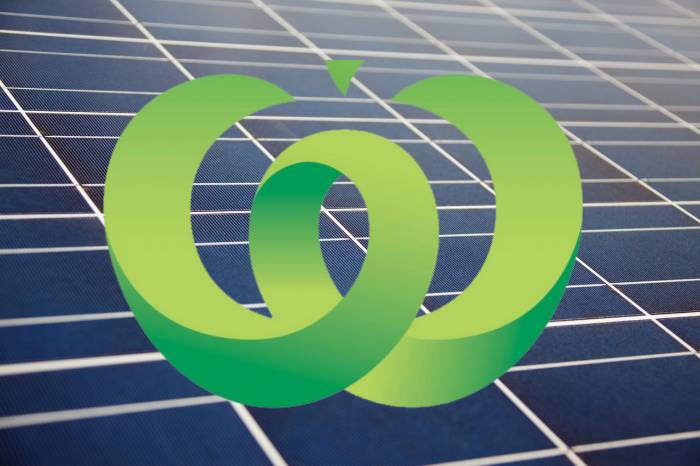We may soon get a look at Woolworths’ huge commercial solar power installation, said to be the largest in Australia.
An article published on Business Insider yesterday states Woolworths is preparing to take the wraps off a new $215 million fully automated distribution centre in Dandenong South in Melbourne. It’s apparently close to reaching practical completion and should be fully operational later in 2018 or early in 2019.
How big is Woolies’ solar power system?
That’s a good question – details of the distribution centre are scant at this stage. Looking via Google Street View at the address just shows a paddock with detritus strewn about the place; but that imagery was dated mid-2015.
However, the Business Insider report provides a clue, stating:
“The facility will house Australia’s largest commercial solar installation and will generate solar power equivalent to 250 homes”
Assuming that means it will generate enough electricity to power the equivalent of the requirements of 250 homes, here’s a very rough calculation (with more assumptions):
– Average household consumes 15-18 kWh each day
– Multiply that by 250 (number of homes), which equals 3,750 – 4,500 kWh
– 1kW of solar will generate approximately 4 kWh a day on average
– 3,750 – 4,500 divided by 4 = 937.5 – 1,125 kW system size.
So, we’re looking at (again, very roughly) a ~940kW to ~1.125MW system on the Woolworths Dandenong distribution center. It’s certainly a big ‘un, but wouldn’t necessarily make it the largest commercial solar power system in the country1. However, all will be revealed soon and perhaps it will turn out be the biggest in its own right, or with qualifiers.
Woolworths’ Other Solar Efforts
Aside from this big project, Woolworths seems to have been pretty quiet on the solar energy front since having a run at it a few years ago. According to its Corporate Strategy 2020 released early last year, the company had at that point installed 25 solar power systems across a range of trading stores. Collectively these sites had total capacity of more than 1.2MW and generated 1560MWh of clean electricity in 2016. Plans for future solar expansion weren’t mentioned in the report.
The company has an immediate target to reduce Woolworths’ carbon emissions to 10 per cent below 2015 levels by 2020.
The rooftops of supermarkets, distribution centres and other similar facilities (and of many much smaller businesses too) can be a perfect fit for commercial solar, unless of course they have “slender roofs” – what is reportedly an increasingly common issue of newer large commercial rooftops being built to minimum specifications and unable to support solar panels.
Footnotes
- For example, a project under construction at Brisbane Airport will see 1.98MW installed on the International Terminal alone ↩


 RSS - Posts
RSS - Posts



So,how does this work ?
Do they get a credit for generating power into the grid and offset it against their own usage in every state ?, because obviously this is for their own consumption but I have never seen anything that sets out the process they or any other supplier would use.
Do they have to negotite contracts ?
How does this work in major shopping centres like Stocklands .
I have never seen this explained any where, it’s just not enough to say they are building this and that.
What I would like to know is how this actually fits into the system ?
just asking.
Over 100KW of installed capacity you become a small power station. And negotiate your feed-in with your retailer.
If they have cold storage the power usage at this site could be very large, and they could potentially not export much power, however they would very likely have a very large demand charge if peak load is close to the middle of the day this would reduce this.
Shopping centers like Stocklands will have a very high usage between lights, aircons, and whatever their tenants use. adds up to alot of power.
If they feed much back into the grid I would say it is more about PR than economics.
It is possible that they could use power feed into the grid to offset other sites, but they would still have to pay for all of the other costs per KW as it went though the NEM. (My basic understanding of the current rules)
So they could avoid “Energy charges” but would still have to pay for “Network charges” and “Market Charges”.
In my case those non Energy charges account for about 60% of the Per KW cost on our large bill. (Powercor NDM tarff ) This is not really comparable to these massive power users but hopefully it gives you an idea.
To further complicate things within the state of Victoria we have 4 different network areas.
https://www.energy.vic.gov.au/electricity/electricity-distributors
Looking at an air photo from March, there are about 3,400 solar panels. This puts it at the lower end of your estimate. Still pretty impressive!